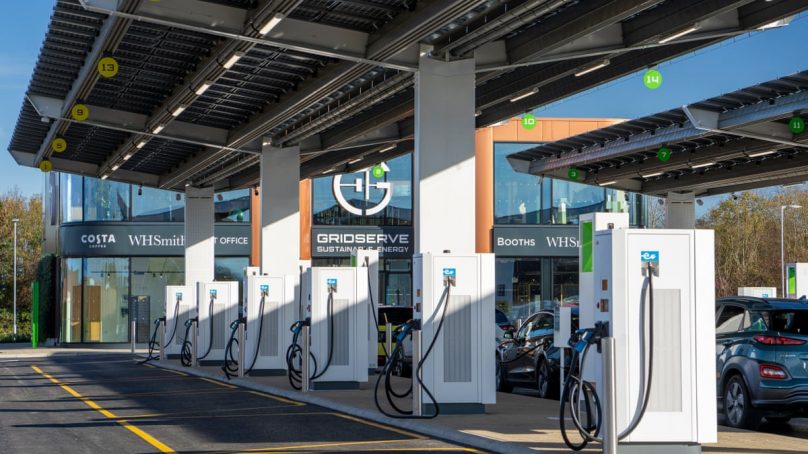
Driving range is important for the widespread adoption of electric vehicles. Most consumers buy cars on the basis of reach because they worry about losing power or being unable to recharge on a long trip. Yet, most car journeys are short – to the shops or school. In the United States, for example, on average, drivers travel 56 kilometres per day, far short of the maximum range for electric vehicles.
Extending that reach by another 100 kilometres or so every few years will make electric vehicles more practical for people who need to travel long distances regularly, for work for example. But even now, it has diminishing returns for the average driver. Fast-charging infrastructure is being deployed more widely. Producing lightweight batteries will reap rewards immediately.
Ways to lighten batteries include using materials that are more energy-dense, and removing heavier components. For example, solid-state batteries that don’t use liquid electrolytes and have the latest anode chemistries are more compact and could offer higher energy densities than is possible for lithium-ion cells.
Lithium-silicon batteries can achieve higher energy densities if manufacturers use more silicon in anodes rather than graphite. Improvements can also be digital — wireless battery management systems can shed up to 90 per cent of the web of wires. Using fewer materials helps manufacturers to save money.
But cutting-edge technologies are expensive to incorporate, raising the costs of electric cars. Government support, from the laboratory to the factory to the consumer, is thus essential to spur innovation and development. Weight-based registration charges could supply some of that money. US subsidies for electric vehicles currently increase with the storage capacity of the battery. Basing electric-vehicle subsidies instead on energy storage per kg (kWh kg-1) would incentivize advances in lighter batteries.
Further developments in battery technology are needed to reduce pollution from manufacturing and to consume less cobalt and other rare metals and minerals. Schemes for recycling and reusing battery and other materials need to be put in place6, before tens of millions of electric vehicles arrive on and then leave the roads.
Tesla, Volvo, GM and other car makers are exploring using battery packaging to support part of the vehicle’s chassis. On the horizon is making the vehicle frame itself the medium to store energy. Research and development is needed to improve conductivity, strength and how structural batteries handle crashes.
About one-third of a vehicle’s mass is conventional steel, down from 44 per cent in 1995. Vehicle structures can be made stronger and lighter by using advanced forms of steel, more aluminium and magnesium, and polymers reinforced with carbon fibre. Each material brings its own cost and technical challenges as well as emissions impacts from production and supply chains. Researchers need to assess these trade-offs to find safe, clean and affordable solutions.
Substituting aluminium for steel reduces vehicle weight and improves energy efficiency. But aluminium production can have nearly five times the embodied carbon emissions of steel8. Switching to recycled aluminium with a low-carbon grid can lower life-cycle emissions to below those of steel.
With heavier vehicles on the road, safety becomes even more important. Some vehicles already use cameras, radar and other sensors to avoid collisions by monitoring blind spots and driver alertness. These devices keep vehicles in lanes, adjust speeds, control headlights and apply the brakes if there’s a threat of a crash. Deploying such technologies across the entire US vehicle fleet could avoid thousands of fatalities, more than one million crashes and billions of dollars in social costs annually.
Old ideas to improve street safety should still be encouraged — speed limits, traffic calming road designs and pedestrian-focused infrastructure. Paris, Brussels, Bilbao and other cities have limited speeds on most roads to 30 kilometres per hour.
Reducing the distance driven can help in meeting climate targets as electric and, eventually, automated vehicles become widely available. Policies should ensure that alternatives such as walking, biking and public transport are safer, more convenient, accessible, affordable and reliable.
Urban designers should consider the impacts of zoning and development on driving patterns to minimize average distances travelled and air-pollution impacts that disproportionately burden vulnerable communities. One legacy of the Covid-19 pandemic is a realization of how much work can be done remotely, with less commuting. Solving these challenges will save lives and protect the climate.
Ultimately, to manage climate change, the world needs to stop emitting greenhouse gases from vehicles and power plants. Electric vehicles powered from a clean grid are an essential step in the right direction. A focus on driving lighter, safer, cleaner and less can ensure a better future for everyone.
- A Nature report











